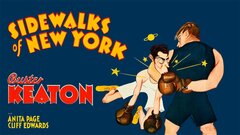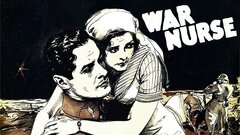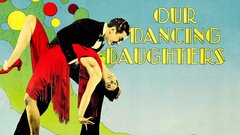Known as "The Girl with the Most Beautiful Face in Hollywood," Anita Page's career was over after only a decade, even though, at one point, she had attained a degree of popularity at MGM second only to studio queen Greta Garbo. A natural blonde with blue eyes, Page's luminous screen presence made her fascinating to watch even in minor fare.
Arriving on the scene when studios were making the switch from silent features to talkies, she was often cast as loose or otherwise amoral women. Page first found fame opposite an equally new and fresh-faced Joan Crawford in "Our Dancing Daughters" (1928) and reached her peak of notoriety following the release of MGM's early musical hit "The Broadway Melody" (1929). She co-starred with several prominent MGM leading men, including Douglas Fairbanks, Jr., Ramon Novarro, William Haines, and Robert Montgomery, and graced a pair of Buster Keaton's sound features.
Most of Page's films were competent efforts that years later were of interest only to film buffs, but a few stood the test of time, including the splendid Lon Chaney crime drama "While the City Sleeps" (1928) and the pre-Hays Code classics "Night Court" (1932) and "Skyscraper Souls" (1932). Almost completely forgotten decades later, Page had one of the most unusual career arcs imaginable, going from regular employment at Hollywood's premiere studio during the Golden Age of movies to small parts in grubby, shot-on-video horror movies seven decades later.
Anita Page was born Anita Evelyn Pomares in Flushing, NY on Aug. 4, 1910, and broke into the movies while still a teen. After undertaking some modeling assignments, her picture was spotted by an agent. This led to Page making some uncredited appearances - including 1926's "Love 'Em and Leave 'Em," co-starring Louise Brooks, and the comic short "Beach Nuts," which was lensed in Cuba - before being offered contracts by both Paramount and MGM. She signed a seven-year contract with the latter, which included a starting salary of $3,000 a week.
The company paired her with established leading men like William "Billy" Haines in "Telling the World" (1928) and Lon Chaney in "While the City Sleeps" (1928) and those movies introduced Page to the public. However, when she was cast with Joan Crawford, another rising MGM starlet, Page became a popular attraction herself. "Our Dancing Daughters" (1928) was a box office smash and both actresses returned for a pair of follow-ups, "Our Modern Maidens" (1929) and "Our Blushing Brides" (1930). A fourth film, "Great Day," was started in 1930, but ultimately never finished. In spite of their shared success in the past, the two women allegedly grew to loathe each other and did not speak when off the set.
The arrival of the talkies derailed the careers of several silent-era stars, but Page made the successful transition in MGM's musical spectacular "The Broadway Melody" (1929). The film sold a multitude of tickets and was the first Best Picture winner at the Academy Awards. Among its highlights was a scene where Charles King sings "You Were Meant for Me" to Page. She quickly became identified with the song, so the studio had Conrad Nagel croon it to her a second time in "The Hollywood Revue of 1929" (1929), though it was actually King's voice on the soundtrack.
MGM kept their new star busy, with Page doing 11 movies in two years. Her popularity soared and at one point, she was receiving over 10,000 fan letters per week, including a number from Italian dictator Benito Mussolini proposing marriage. In spite of this adoration, Page never quite attained the A-list status of Greta Garbo, Norma Shearer, or Joan Crawford. She remained an engaging presence, however, and appeared in "Gentlemen's Fate" (1930), opposite John Gilbert, and with Buster Keaton in "Free and Easy" (1930) and "Sidewalks of New York" (1931). Two of her pictures from this stage, "Night Court" (1932) and "Skyscraper Souls" (1932) remain of particular interest to fans of pre-Code films for their soon-to-be-taboo adult themes, with Page cast as a prostitute in the latter.
By all accounts, Page enjoyed her celebrity and the privilege that came with it. She remained out of the headlines for the most part, but in addition to the feud with Crawford, she did have other unusual occurrences behind the scenes. At some point after they appeared together in "Telling the World," Page was allegedly proposed to by Haines. Openly gay at a time when this was hardly encouraged, particularly by conservative movie studio bosses like Louis B. Mayer, Haines' refusal to hide his preferences caused his career to nosedive. Haines may have been trying to get back on track by using the actress - who was said to be unaware of his homosexuality - as a "beard," but ultimately his days as an actor were numbered. Another of Page's co-stars, Ramon Novarro, was also gay and dated her for a time, reportedly with similar intent. During her time as a member of the Hollywood jet set, Page was a frequent guest of William Randolph Hearst and at one point, lived at his San Simeon castle for six months.
It was commonplace for actors under contract to be loaned to other studios, but this rarely happened to Page until 1933, when MGM began regularly farming her out to smaller studios for decidedly smaller pictures, like the Monogram potboiler "Jungle Bride" (1933) and the Clyde Beatty vehicle "The Big Cage" (1933). The actress claimed that her fall in favor at the studio was due in part to her rejecting the sexual advances of Mayer and MGM producer Irving Thalberg. The following year, Page married popular composer Nacio Herb Brown, who had scored "The Broadway Melody" and dedicated "You Were Meant for Me" to the actress, but their Tijuana union was annulled after less than a year. Her MGM contract was also now over and following a sixth billed appearance in the independently made drama "Hitch Hike to Heaven" (1936), Page decided to retire. She wed Navy Admiral Herschel House the following year and the couple remained together until his death in 1991.
It had long been assumed that there was a 60-year gap between "Hitch Hike to Heaven" and Page's return to acting, but this proved untrue when "The Runaway" (1961) appeared on Turner Classic Movies in 2008. The family film, which featured Page in a supporting role as a nun, did not find a distributor after production finished and sat unseen for almost 50 years until it was dusted off for that TV showing. In the mid-1990s, Page made a second return, though the films at that time tended to be of a much lower quality level than the 1930s indies she had appeared in years before. Marginal releases even on video and DVD, "Sunset After Dark" (1996), "Witchcraft XI: Sisters in Blood" (2000), "The Crawling Brain" (2002), and "Bob's Night Out" (2004) hardly made the best use of the elderly actress, though she did also share memories of her career and Golden Age Hollywood to various film historians. Page made her final appearance as Elizabeth Frankenstein in "Frankenstein Rising" (2010), which was shot in 2008, the year she died of natural causes at age 98. Page was awarded a star on the Hollywood Walk of Fame in 1960.
By John Charles
















































































































